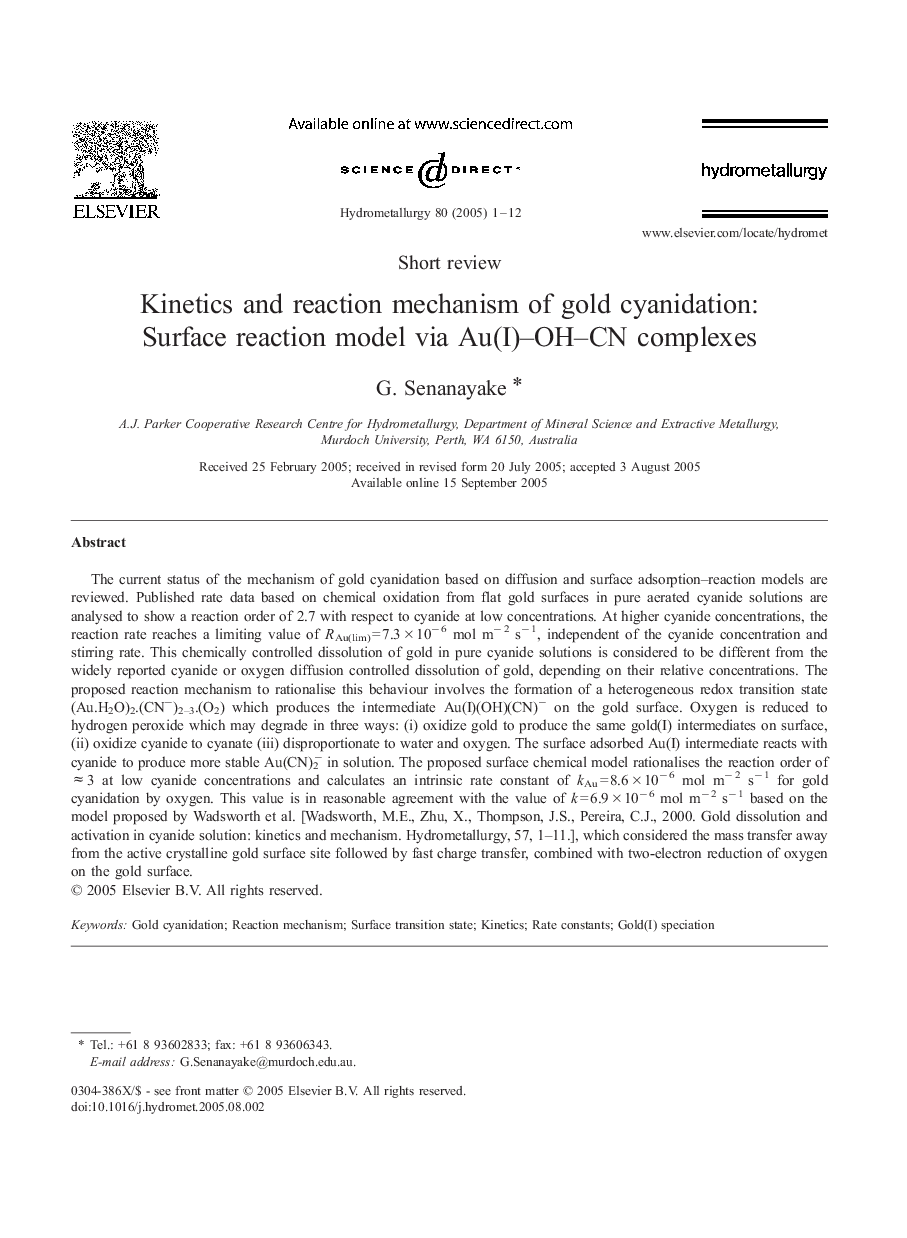| Article ID | Journal | Published Year | Pages | File Type |
|---|---|---|---|---|
| 9632495 | Hydrometallurgy | 2005 | 12 Pages |
Abstract
The current status of the mechanism of gold cyanidation based on diffusion and surface adsorption-reaction models are reviewed. Published rate data based on chemical oxidation from flat gold surfaces in pure aerated cyanide solutions are analysed to show a reaction order of 2.7 with respect to cyanide at low concentrations. At higher cyanide concentrations, the reaction rate reaches a limiting value of RAu(lim) = 7.3 Ã 10â 6 mol mâ 2 sâ 1, independent of the cyanide concentration and stirring rate. This chemically controlled dissolution of gold in pure cyanide solutions is considered to be different from the widely reported cyanide or oxygen diffusion controlled dissolution of gold, depending on their relative concentrations. The proposed reaction mechanism to rationalise this behaviour involves the formation of a heterogeneous redox transition state (Au.H2O)2.(CNâ)2-3.(O2) which produces the intermediate Au(I)(OH)(CN)â on the gold surface. Oxygen is reduced to hydrogen peroxide which may degrade in three ways: (i) oxidize gold to produce the same gold(I) intermediates on surface, (ii) oxidize cyanide to cyanate (iii) disproportionate to water and oxygen. The surface adsorbed Au(I) intermediate reacts with cyanide to produce more stable Au(CN)2â in solution. The proposed surface chemical model rationalises the reaction order of â 3 at low cyanide concentrations and calculates an intrinsic rate constant of kAu = 8.6 Ã 10â 6 mol mâ 2 sâ 1 for gold cyanidation by oxygen. This value is in reasonable agreement with the value of k = 6.9 Ã 10â 6 mol mâ 2 sâ 1 based on the model proposed by Wadsworth et al. [Wadsworth, M.E., Zhu, X., Thompson, J.S., Pereira, C.J., 2000. Gold dissolution and activation in cyanide solution: kinetics and mechanism. Hydrometallurgy, 57, 1-11.], which considered the mass transfer away from the active crystalline gold surface site followed by fast charge transfer, combined with two-electron reduction of oxygen on the gold surface.
Related Topics
Physical Sciences and Engineering
Chemical Engineering
Chemical Engineering (General)
Authors
G. Senanayake,
